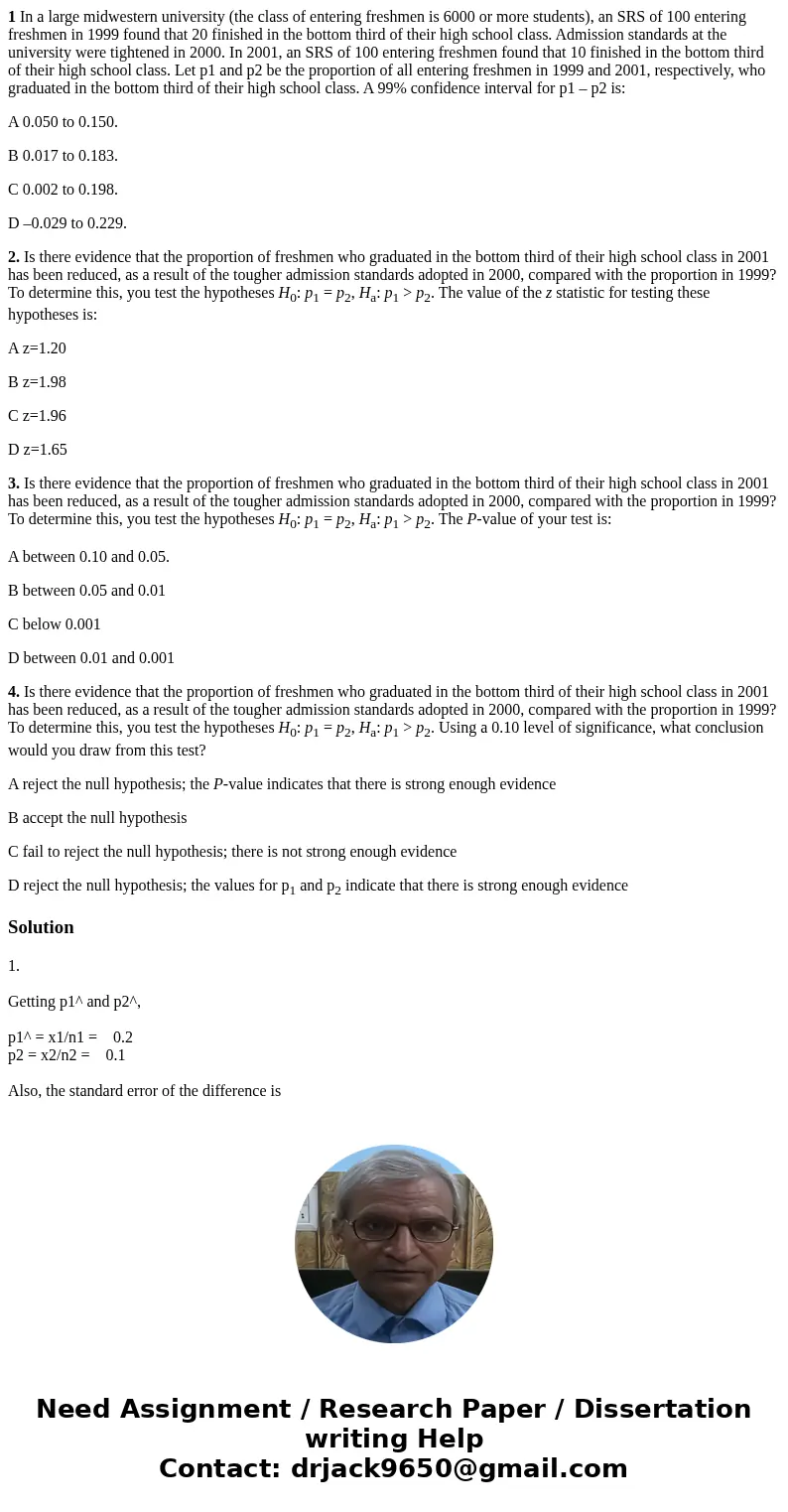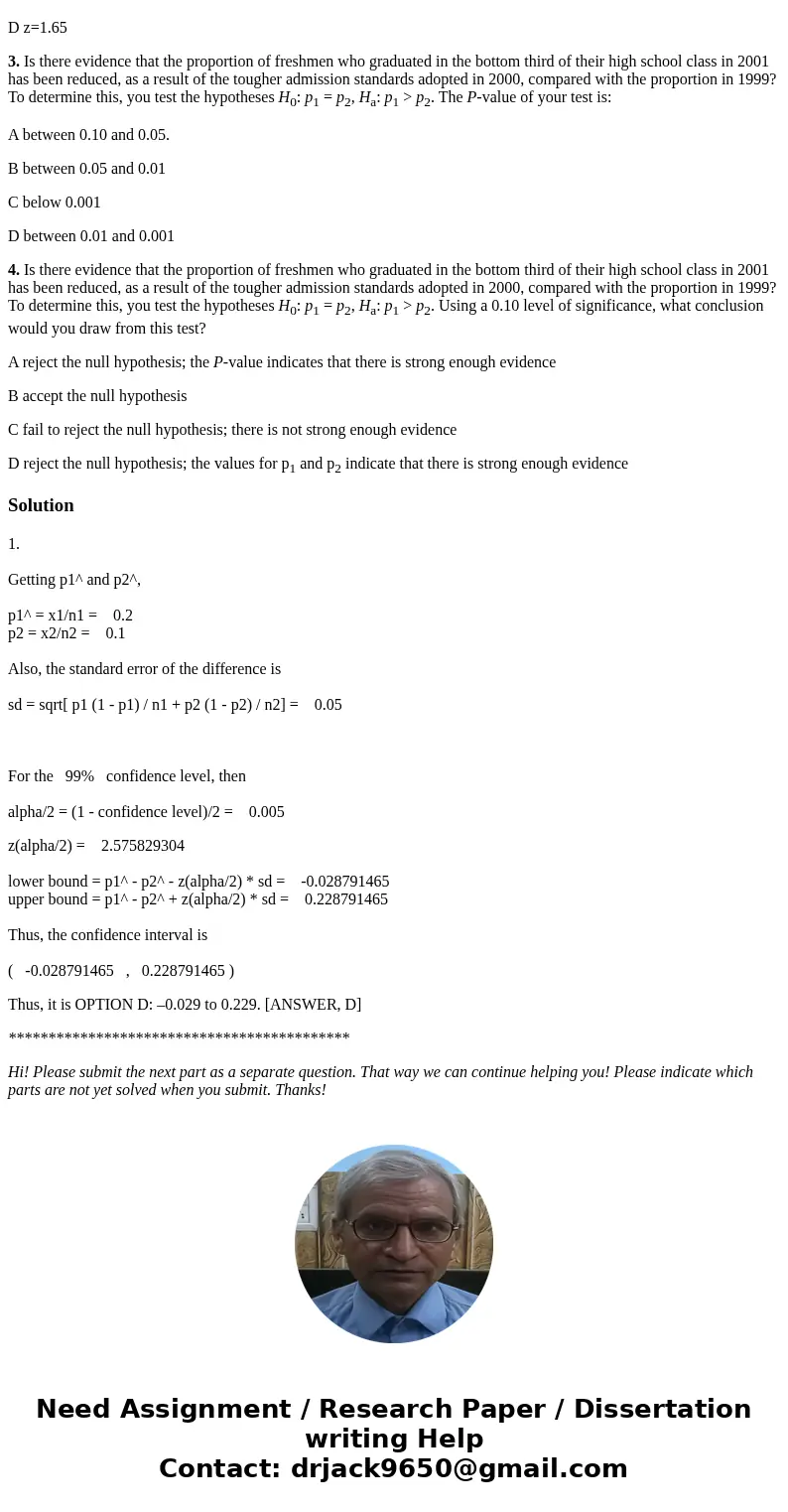1 In a large midwestern university the class of entering fre
1 In a large midwestern university (the class of entering freshmen is 6000 or more students), an SRS of 100 entering freshmen in 1999 found that 20 finished in the bottom third of their high school class. Admission standards at the university were tightened in 2000. In 2001, an SRS of 100 entering freshmen found that 10 finished in the bottom third of their high school class. Let p1 and p2 be the proportion of all entering freshmen in 1999 and 2001, respectively, who graduated in the bottom third of their high school class. A 99% confidence interval for p1 – p2 is:
A 0.050 to 0.150.
B 0.017 to 0.183.
C 0.002 to 0.198.
D –0.029 to 0.229.
2. Is there evidence that the proportion of freshmen who graduated in the bottom third of their high school class in 2001 has been reduced, as a result of the tougher admission standards adopted in 2000, compared with the proportion in 1999? To determine this, you test the hypotheses H0: p1 = p2, Ha: p1 > p2. The value of the z statistic for testing these hypotheses is:
A z=1.20
B z=1.98
C z=1.96
D z=1.65
3. Is there evidence that the proportion of freshmen who graduated in the bottom third of their high school class in 2001 has been reduced, as a result of the tougher admission standards adopted in 2000, compared with the proportion in 1999? To determine this, you test the hypotheses H0: p1 = p2, Ha: p1 > p2. The P-value of your test is:
A between 0.10 and 0.05.
B between 0.05 and 0.01
C below 0.001
D between 0.01 and 0.001
4. Is there evidence that the proportion of freshmen who graduated in the bottom third of their high school class in 2001 has been reduced, as a result of the tougher admission standards adopted in 2000, compared with the proportion in 1999? To determine this, you test the hypotheses H0: p1 = p2, Ha: p1 > p2. Using a 0.10 level of significance, what conclusion would you draw from this test?
A reject the null hypothesis; the P-value indicates that there is strong enough evidence
B accept the null hypothesis
C fail to reject the null hypothesis; there is not strong enough evidence
D reject the null hypothesis; the values for p1 and p2 indicate that there is strong enough evidence
Solution
1.
Getting p1^ and p2^,
p1^ = x1/n1 = 0.2
p2 = x2/n2 = 0.1
Also, the standard error of the difference is
sd = sqrt[ p1 (1 - p1) / n1 + p2 (1 - p2) / n2] = 0.05
For the 99% confidence level, then
alpha/2 = (1 - confidence level)/2 = 0.005
z(alpha/2) = 2.575829304
lower bound = p1^ - p2^ - z(alpha/2) * sd = -0.028791465
upper bound = p1^ - p2^ + z(alpha/2) * sd = 0.228791465
Thus, the confidence interval is
( -0.028791465 , 0.228791465 )
Thus, it is OPTION D: –0.029 to 0.229. [ANSWER, D]
*******************************************
Hi! Please submit the next part as a separate question. That way we can continue helping you! Please indicate which parts are not yet solved when you submit. Thanks!


 Homework Sourse
Homework Sourse